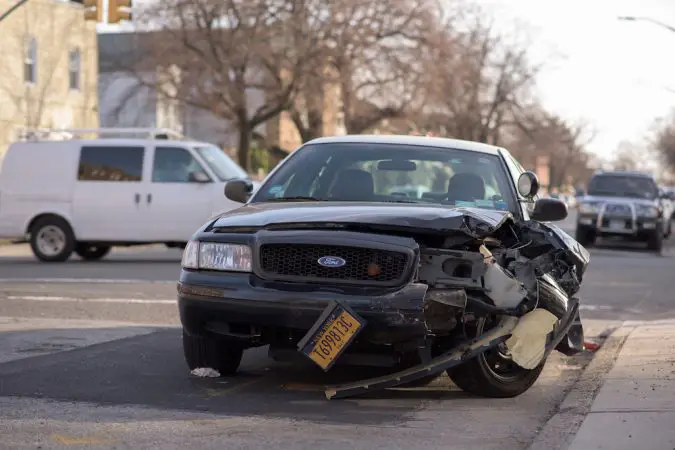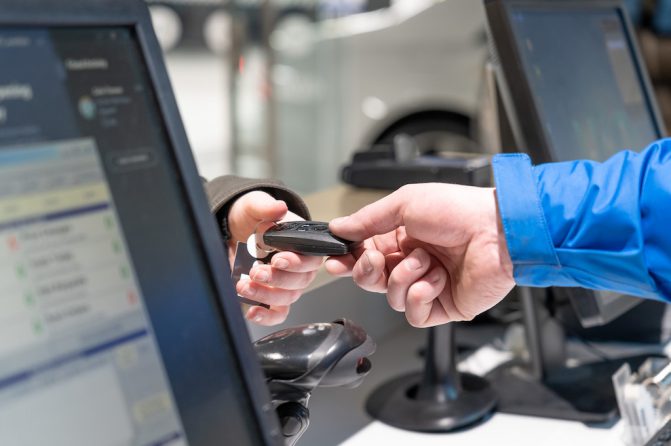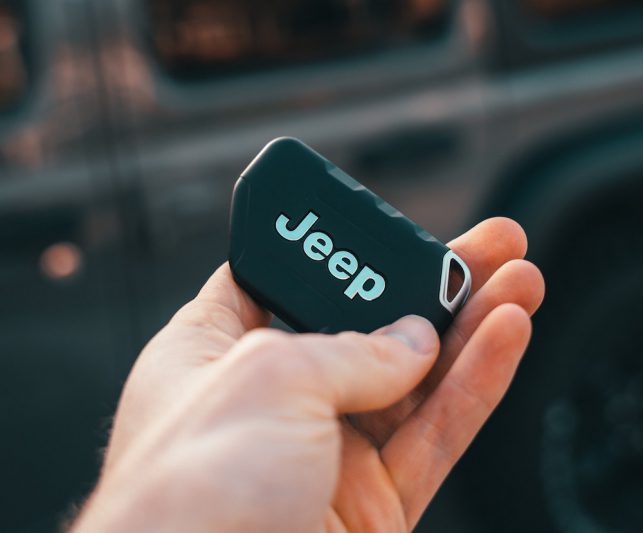One question we often hear is “How do I find out the actual cash value of my car?” and if you often wonder as well, you’ve come to the right place. Because that’s what we’re going to discuss in this post! We’ll explain what actual cash value (ACV) is, how to find out, and why you need to know about it.
Actual Cash Value Of My Car: What Is It For?
Owning a car or almost any sort of motor vehicle will require you to have some type of insurance policy. Depending on your insurance policy, it might be important for you to know the actual cash value of your car. Actual cash value or ACV is the value of your car or vehicle while taking depreciation into account.

Actual cash value is what the insurance industry uses to determine the worth of your car. For example, if your car has been stolen or totaled (damaged beyond repair) in an accident, and you make a claim, insurers use ACV to determine the amount of money they need to give you.
The actual cash value is necessary since cars almost always lose their value the moment it drives off the dealer. This means that your car definitely isn’t worth what it was when new, and you can’t use the car’s brand new price to determine the cash payout your insurer has to pay.
Insurers use ACV to determine your car’s worth to make sure that both you and they get a fair value. By using ACV, insurers can make sure that they don’t pay out too much money – they’re a business after all they need to stay in business. While you still get a fair payout as well so you can replace your car with a worthy replacement.
Why Do I Need To Know My ACV?
When you make a claim to your insurance company, they will do a valuation of your stolen or totaled car. They will then give you this valuation, and if you’re happy with the valuation, they’ll give you the payout to replace your car. However, sometimes the valuation that an insurance company gives may be a little too low. And that’s why you need to know your ACV, so you know your car’s worth.
By knowing your ACV, you can negotiate for a fairer valuation should you feel the initial valuation is too low. In a nutshell, it’s a good thing to know how much your car is worth so you’ll be able to get a fair payout.
Is It Just For Car Insurance?
No, ACV is often used for determining the value of other things in the insurance industry as well. For example, it’s also used for determining the value of a house or other property. Knowing your car’s actual cash value also has its benefits outside of when you make an insurance claim.
One instance where you will benefit from knowing ACV is when you want to sell your car. By knowing your car’s ACV, you can sell your car at the appropriate value. You won’t sell it too cheap that you won’t get your car’s worth. But you won’t sell at a too high price either that you struggle to find a buyer. Knowing your ACV will greatly help during negotiations.
How Insurance Companies Calculate Actual Cash Value
Insurance companies will have their proprietary method of calculating your car’s actual cash value. The formulas are unlikely to be the same, so the valuation from one insurance company to another is likely to be different. But to give you a general idea, most companies will use the car’s condition (before the collision), age, mileage, and any documented damage to the car before the accident to calculate the value.
Additionally, they will also often take a look at comparable cars in your area that are for sale to determine the value. For example, if you drive a 2010 Toyota RAV4, they will take a look at similar cars for sale in your area of residency. If a similar RAV4 is for sale at around $20,000, you can expect your valuation to be around that number. Of course, any documented damage or higher mileage is likely to lower your valuation.

Keep in mind that this payout we’ve been talking about is only true if you have a collision or comprehensive coverage. In the event of an accident and you are at fault and you have one of the two coverage, your insurance will pay you your car’s ACV. However, if you only have liability coverage and you’re at fault in the accident, you’ll have to repair or replace the car yourself. Also, note that there are probably more things that your insurance policy may not cover.
When Can I Claim Actual Cash Value?
You can claim this when your car is stolen, or is damaged beyond repair, or is considered a total loss, in which case you’ll have to make a total loss claim. To make a total loss claim, you’ll need to make a police report. Make sure that there are no inaccuracies before you sign the report, and do not exaggerate the incident.
After you sign the police report, you’ll want to call your insurance company as soon as possible and make a claim. You’ll have to either write down or voice record your recollection of the accident. From there on, your insurance company will set your claim in motion.
How To Determine Your Car’s Actual Cash Value
So here are two ways to answer the question “What’s the actual cash value of my car?”: you can manually count it by doing your own research. Or you can use online depreciation calculators to give you a quick estimate on how your car may be worth it since one of the biggest factors in determining the actual cash value of your car is the depreciation rate.
If you want to manually calculate it, you’ll have to research a few things about your car. What you’ll need to do is look for a car on sale that’s the same as your car. Look for a car that’s the same model, year, trim level, and mileage. You can find this at dealership websites, Autotrader, or even eBay.
Once you find cars that are similar to yours, take note of their price range. What’s the highest price is someone selling a similar car to yours for? What’s the lowest price? From there, take your car’s condition into account. If your car has any damage or problems before the accident, deduct the price with the repair cost estimates.
For example, let’s say your car is worth $20,000 in the secondhand market. And then let’s say you have a documented body dent before the accident, and the estimate to fix that is around $800. Then your car’s ACV should be around $19,200.
Using Online Depreciation Calculators
If you don’t feel like doing too much research, you can just use an online depreciation calculator instead. They’re quick and easy to use, and you can find out your car’s worth after depreciation without doing too much research.
Most calculators will only ask you to input the car’s make and model, year, how long you’ve owned it, and sometimes your annual mileage. From there, they will give you an estimate on how much your car is worth now. However, some calculators may require you to input your VIN and license plate so they can give you a more accurate estimate.

Some depreciation calculators you can use include Edmunds, State Farm, and CarEdge. To give you more information about depreciation, most cars will typically lose around 20% to 30% of their value in the first year. Afterward, it will lose around 15% to 18% per year until about year six. As a rule of thumb, you can expect your car to lose about 60% of its initial value after five years.
For example, if you bought your car for around $35,000, after five years it’s usually valued at around $21,000. Keep in mind that this is an estimate for most cars. Some cars will lose their value much faster, usually because they’re from a foreign carmaker and isn’t particularly popular in the United States. This means that there’s not a lot of demand in the market, and low demand means lower prices.
Another reason is due to reliability; cars with low reliability tend to lose their value much faster. This is because no one wants an unreliable car, lowering the demand for such cars. Some cars that depreciate more than most include the Maserati Quattroporte and the Jaguar XJL.
Is ACV The Same As Replacement Cost?
The actual cash value and replacement cost or replacement value are similar. But the difference is that replacement cost won’t take depreciation into account. For example, if you drive a BMW 3-series and it’s been totaled or stolen, the insurance company won’t just pay for the actual cash value, they will pay for a brand new BMW 3-series. Additionally, the payout may also cover other expenses such as tax and title transfer fees.
Seems better, right? However, a replacement value policy does have its terms and conditions. For example, often it will only cover cars that are less than a year old with less than 15,000 miles and is not a lease. If you don’t meet the terms and conditions at the time of the accident, then you won’t be eligible for a replacement cost. You’ll need need to check with your insurer for the full terms and conditions.
If you’re just now choosing your insurance coverage, you might be tempted to choose a coverage that includes replacement cost rather than ACV. But should you? Well, that depends. Insurance coverage that has a replacement value policy tends to be more expensive, so you’ll have to pay more upfront.
However, if you want better peace of mind, coverage with a replacement value policy may be the better option. One scenario that we can think of where you might benefit is when you have a teenage son/daughter that just started driving. Since they’re new to driving, they might be more prone to accidents. Having a replacement value policy may ease your mind.
Negotiating Actual Cash Value Valuation
What if you’re not happy with your insurer’s ACV valuation? As mentioned, your insurer’s ACV is not set in stone and you can dispute it if you like. This is why you should do your own research to find out your car’s actual cash value. But before you dispute it, make sure you have legitimate reasons and facts to back up your dispute. Just because you feel your car is worth more, doesn’t mean the insurance company will agree with you.
Here are some tips to negotiate your car’s actual cash value:
1. Do Your Own ACV Research
To dispute the valuation, you’ll need to do your own research of your car’s value. You can start by searching for cars at dealerships that exactly match your car. If you can’t find any, then look online for cars for sale that match your car. Autotrader, Craigslist, and eBay is a good option.
And finally, you can pull up valuations from Kelley Blue Book or Carfax. If their valuation is higher than the valuation that your insurer gave you, you can use this to strengthen your case.
2. Find Out How Your Insurer Evaluates ACV
As mentioned, insurance companies usually have their proprietary formula in evaluating actual cash value. You might want to find out how they come up with their evaluation numbers. Not only will this be fair to you, but it also helps to identify if the valuation method is a bit sketchy or unfair.
If their method or formula seems to be unfair, you can use this as another reason to dispute their valuation.
3. Include Upgrades And Additional Value In Your Car
If your car has low mileage or is well-maintained, you can use this as an argument to negotiate your car’s actual cash value. For example, if you’ve had your car professionally detailed, then you can argue that your car was well-maintained and had an excellent exterior condition.
Car detailing removes external – and often interior – flaws, and afterward they coat your car with a protective layer for extra protection. You can argue that your car has more value because of this since car detailing isn’t exactly cheap either.
Additionally, you’ll want to include upgrades that you’ve installed on your car as well. Whether it’s aftermarket or OEM (Original Equipment Manufacturer), you’ll want to include this information as long as it adds value to your car. For example, if you’ve installed an optional extra (such as a higher-grade entertainment software or sound system) that isn’t originally in your car’s trim level, then you can argue that this adds value and your car is worth more.
What If The ACV Isn’t Enough?
Sometimes the payout from your actual cash value isn’t enough to cover the bills. In this case, you might want to consider some additional insurance to help cover the costs:
Gap Insurance
Gap insurance is something you should consider if you choose to lease or finance your car. If your car is stolen or totaled, gap insurance will cover the balance left on your car loan or lease. Keep in mind that you will still need to purchase a collision and comprehensive coverage to be eligible for gap coverage.
However, we strongly recommend gap coverage if you lease or finance your car. Otherwise, you’ll have to deal with the loan balance yourself if your car is totaled or stolen. Additionally, gap coverage is relatively affordable as well. They’re usually somewhere around $20 a year. Here’s an example of how gap insurance work:
- You purchase a car that costs $30,000. After paying the down payment, you then owe $25,000 of car payments.
- Assume that you purchase a collision and comprehensive coverage with a $500 deductible.
- You have an accident and then the insurance company determines your car’s ACV at $24,000, but you still owe $25,000 for car payments.
- The insurance will pay out $23,500 ($24,000 ACV minus the $500 deductible).
- The insurance company will also pay the difference between what’s owed and the ACV, which is at $1,500 ($25,000 owed minus $23,500 payout).
Keep in mind that these things are usually not covered by gap insurance:
- Overdue lease/loan payments.
- Carry-over balances from previous loans or leases.
- Costs for extended warranties, credit life insurance, or other insurance purchased with the loan or lease.
- Financial penalties.
- Optional extras for the car that the buyer purchases.
- Mechanical issues, such as engine or transmission failures, or any other car problems that are not losses covered by your car insurance policy.
New Car Replacement Insurance
The replacement cost/value policy is sometimes called new car replacement insurance. As mentioned, this replaces your totaled or stolen car with a new one. You will receive a payout in the amount that it costs you to buy a new version of your car.
Of course, there are terms and conditions. Some insurance companies will require your car to be less than three years old, and many won’t insure it if it’s not entirely brand new or has very low mileage. Additionally, this is an insurance policy that’s pretty rare to find. Even some of the largest insurance companies like State Farm don’t offer this policy.
As an example, let’s say you bought a brand new 2020 Toyota RAV4 for $35,000. The car then gets into an accident and is beyond repair less than a year later. Meanwhile, let’s say the sticker price of a brand new Toyota RAV4 that’s the same as yours is now $36,500. This means the insurance will pay you $36,500 to buy a new car.
As for the price, it will depend on the driver’s record, type of car, and state. But expect to pay around 5% on top of the insurance policy that you chose.
Stated Value And Agreed Value Insurance
If you have a classic or collectible car, such as supercars, for example, a stated value or agreed value insurance is probably the one you will need to get. Here are the differences between them:
Stated Value Insurance
If you have a collectible car with an insurance premium you can’t afford, your insurer may recommend stated value insurance. This insurance will give you a stated amount of payout, hence why they call it stated value.
For example, let’s say you inherit a classic car that’s valued at $200,000 with an insurance premium of $10,000 per year. And then let’s say you can’t afford that premium, but you still want to keep the car because of sentimental reasons. You can choose stated value insurance instead, where (as an example) the insurer agrees to pay you $80,000 in the event of a total loss, and the premium is at a lower price which you can afford.
This means that you won’t get your car’s worth in the event of a total loss, but you’ll still get $80,000 to help with repair costs or the cost to buy a new car instead. And most importantly, you can afford that insurance.

The downside is that this insurance policy often comes with an actual cash value clause. This means the insurer can choose whether to pay the stated value or the actual cash value after a total loss, depending on which one is lower. For example, if the stated value is $80,000, but the ACV is at $70,000, the insurance company is can legally pay you just that $70,000. Be sure to read the clauses first when deciding on your policy.
Agreed Value Insurance
Agreed value insurance is similar to the stated value insurance. The difference is that you and the insurer will agree upon a certain amount, and the insurer will have to pay that amount in the event of a total loss no matter what. This insurance policy does not take depreciation into account. Additionally, there are no actual cash value clauses in this insurance policy.
For example, let’s say you have a car that’s worth $300,000. And you and your insurer agree on the $300,000 payout amount. If your car is stolen or totaled, your insurance company will pay out $300,000 no matter what. Regardless of depreciation, mileage, and documented damage, you will receive that $300,000 amount. The downside is of course this policy isn’t cheap.
Insurance companies don’t list the cost for this type of insurance since they will vary greatly depending on the car. So, you’ll have to check with your insurance company to find out. Keep in mind that this type of insurance is only recommended for collectible cars.
Facts about Actual Cash Value of a Car and Negotiating with Insurance Companies:
- Actual Cash Value (ACV) is the current value of a car, taking into account depreciation.
- If the damage to a car exceeds a certain percentage of its ACV, the insurer will declare it a total loss.
- Replacement cost is higher than ACV and refers to the cost of buying a new vehicle of the same or similar make and model.
- Cars depreciate quickly, making it easy to become upside down on an auto loan or lease, but GAP coverage can help mitigate this risk.
- Insurance companies use third-party vendors to determine a car’s ACV based on various factors, including year, make, model, mileage, wear and tear, and accident history.
- Disagreeing with the insurance company’s estimate of a car’s value can be negotiated, but evidence is required to back it up.
- Kelley Blue Book can be used to double-check the insurer’s valuation and provide a more accurate estimate.
- Upgrades or after-market products can be included in discussions with appraisers to ensure that they understand everything included in the car.
- If you can’t agree with the adjuster, you can hire a private appraiser, but it can cost around $200 to $300.
- The insurance company will only declare a car a total loss if the cost of repairs exceeds a certain percentage of the vehicle’s ACV.
Actual Cash Value Of My Car: In Conclusion
What’s the actual cash value of my car? Well, it’s the value of your car when it was new, deducted by depreciation and other damage that your car may have before an accident. It’s important to know your car’s actual cash value, especially when you’re making a total-loss insurance claim that involves an actual cash value payout. It also helps to know your car’s actual cash value when you’re about to sell your car.
If the actual cash value payout isn’t enough, you can consider getting other insurance policies. Gap insurance, replacement cost policy, or stated and agreed value policies may be a good option depending on your situation. Hopefully, this article has been helpful and now you know better about car insurance.

